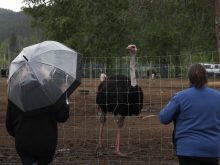An organization representing American cattle veterinarians has opted to refer to bird flu in cattle as bovine influenza A virus, or BIAV, in hopes of distancing it from its avian counterpart.
“We believe it is important for the public to understand the difference to maintain confidence in the safety and accessibility of beef and dairy products for consumers,” the American Association of Bovine Practitioners said in a letter yesterday.
While the virus causes high morbidity and mortality in birds, the association said, it does not cause effect cattle in the same way despite being caused by the same H5N1 virus.
Read Also

Europe, North America face early wave of bird flu cases
An unusually early outbreak of bird flu cases affecting high numbers of wild birds and poultry farms across Europe and North America is raising concerns of a repeat of previous crises that led to mass culling and food price spikes.
“We encourage other organizations, state animal health officials, diagnostic labs and state and federal agencies to use this name,” the letter added.
To date, the disease has been found in cattle in Idaho, Michigan, Ohio, Kansas, New Mexico and Texas, according to the USDA’s website. No cases have been confirmed in Canada.
One person, a Texas farm worker who had contact with presumed infected dairy cattle, was confirmed with the disease, and the U.S. Centers for Disease Control and Prevention (CDC) said Monday that the risk to the public of infection remains low.
However, it asked state public health officials to have plans in place to quickly test and provide treatment to potentially impacted farm workers following positive results among cattle herds.
Since 2003, there have been 14 cases of the H5N1 clade 2.3.4.4b virus in humans, wrote biosecurity researchers in an April 8 article published on The Conversation.
The Texas farm worker’s case appears to be mild, they wrote, presenting as conjunctivitis, or pink eye. Previous cases have involved severe respiratory illness and neurological complications.
Scientists’ concerns stem from fears that—while avian flu viruses don’t spread easily among humans—they could jump to species like pigs where avian and human flu viruses could mix and mutate into something that more readily infects humans, the researchers wrote.
Although the number of outbreaks has been lower this season the virus has spread to new regions, including South America and Antarctica, and hit a larger number of animals, including cats, tigers, bears and seals.
—with files from Reuters















